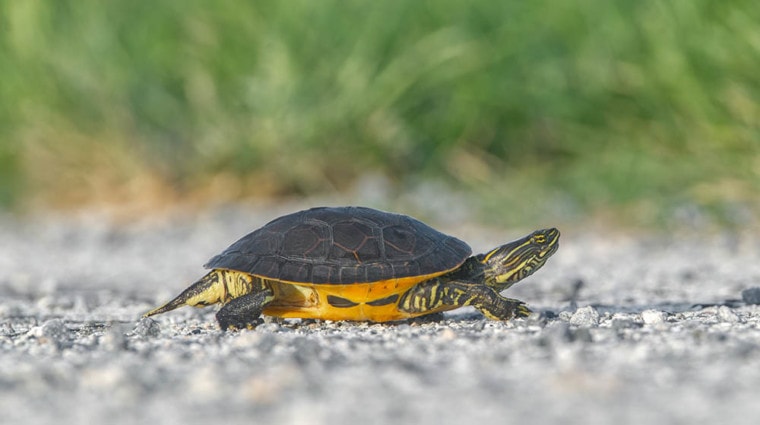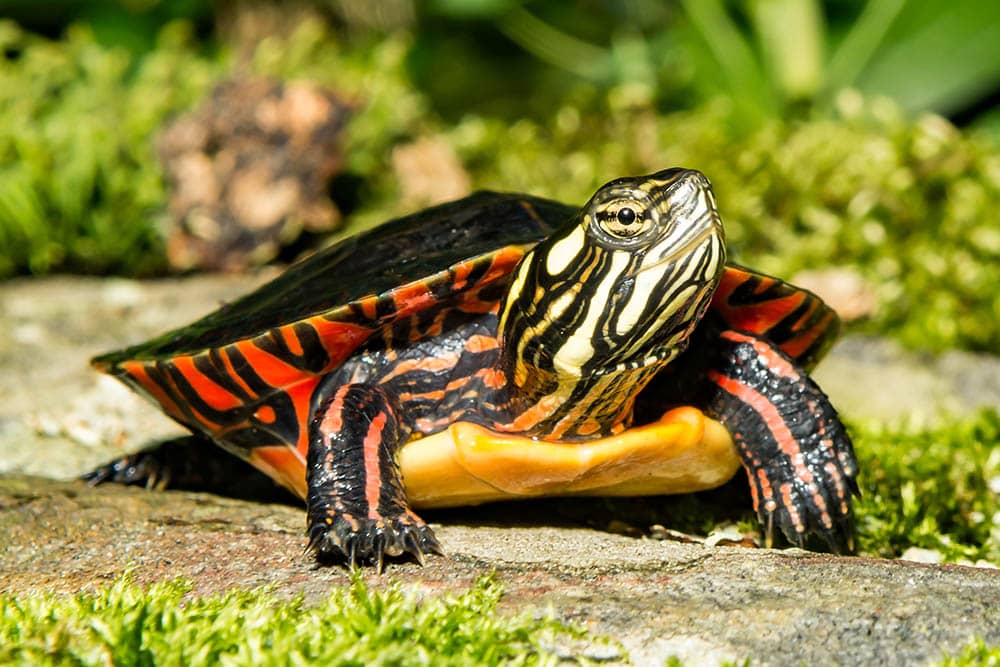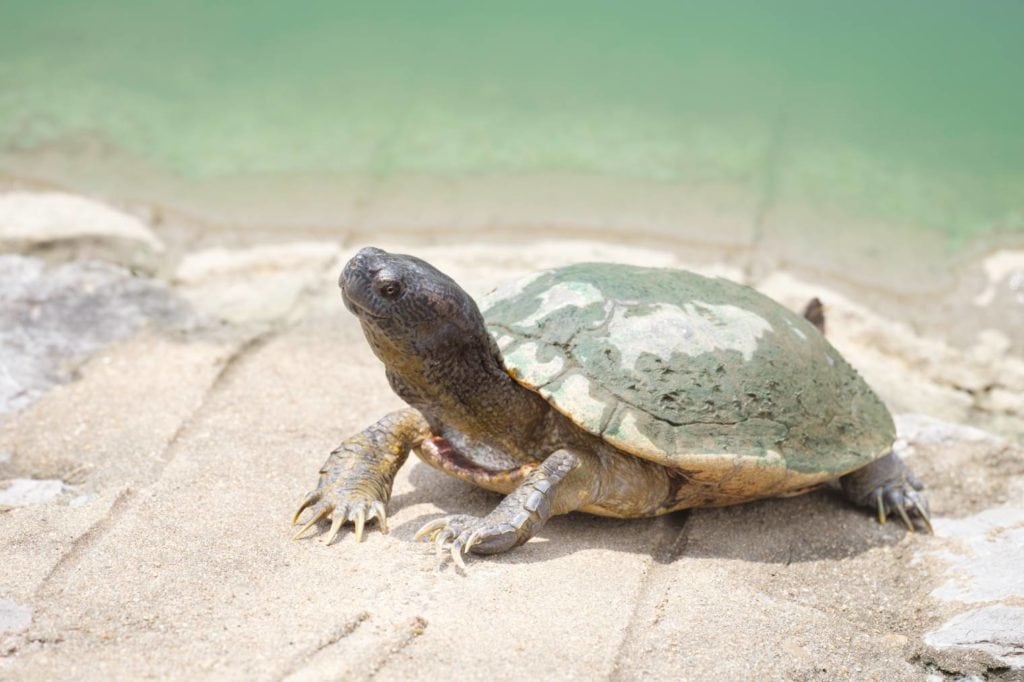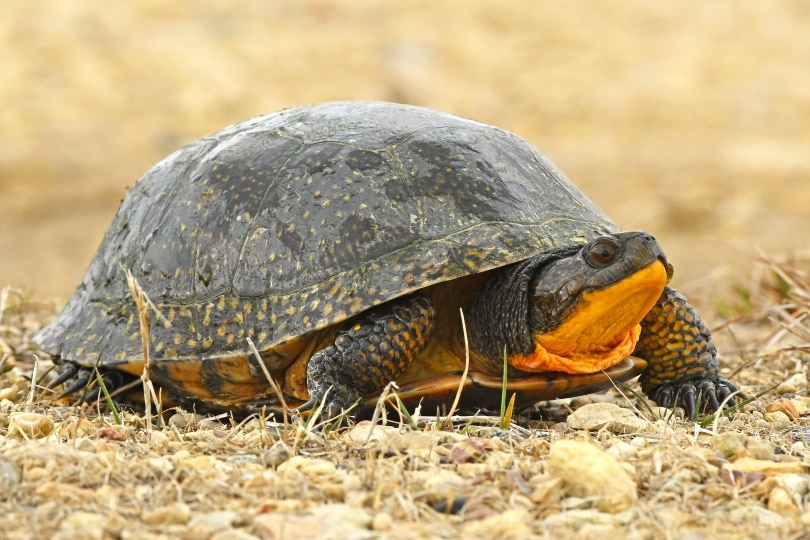
What do you know about turtles? You probably know they’re slow, and yet somehow, in the famous fable, they beat a hare in a race. Or was that a tortoise? Are turtles and tortoises the same thing? Keep reading to find out the answer to this and more fascinating turtle facts!
The 12 Turtle Facts
1. Turtles and tortoises are not the same.
All tortoises are technically turtles, although not all turtles are tortoises. The biggest difference is tortoises are terrestrial, spending the majority of their time on land. Turtles, on the other hand, prefer water.
Tortoises also look a little different. They have thicker back legs and a more rounded shell than a turtle. Turtles, because of their need to swim, have webbed feet and thinner legs.
2. Turtles have been around for over 200 million years.
The earliest known turtle to have a fully-formed, hard shell lived about 210 million years ago. However, remains of a primitive turtle dating back even further were found in China in 2008. The species has expanded to include hundreds of varieties.

3. The turtle’s shell is part of its skeleton.
The turtle’s shell is made up of over 60 different bones that fuse together to form their protective covering. The shell is also attached to its spinal column and cannot be detached. This dispels the myth that a turtle can crawl out of its shell. Instead, some turtles can retract into their shell to hide. Others, such as the snapping turtle, cannot.
4. A turtle’s diet is flexible.
What a turtle eats is largely influenced by what’s available where they live. Many will eat insects and small fish. Others love to munch on small crustaceans. They also eat aquatic plants. Tortoises are herbivores who eat only fruits and vegetables.
5. The oldest turtle ever is currently believed to be 189 years old!
Jonathan, a Seychelles giant tortoise who lives on St. Helena Island in the Seychelles Islands, is believed to be the oldest tortoise ever. He recently surpassed a 188-year-old tortoise for the title.

6. Some sea turtles can swim 10,000 miles in one year.
The leatherback species of sea turtle gets around. These turtles migrate between their nesting and foraging areas to the tune of 10,000 miles (or more) per year. They can also swim very far beneath the surface with one reporting of a dive of nearly 4.000 feet deep.
7. Turtles live on every continent except Antarctica.
Because they live both on land and in water and adapt their diet to their habitat, turtles can be found all over the world. The only continent turtles don’t inhabit is Antarctica.
8. Sea turtles can lay over 100 eggs at a time.
Sea turtles are prodigious egg layers. The females lay over 100 eggs at a time and can have several clutches of eggs each year. Unfortunately, they need to lay this many eggs as only 1 in 1,000 baby sea turtles will live to adulthood. They are easy prey for many other creatures.
It is believed that the high mortality rate is the reason many female sea turtles will lay their eggs in the same spot where they can all hatch at once. Large clusters of sea turtles make it more difficult for predators to catch them all.

9. Turtles don’t have visible ears.
Although they don’t have visible ears, turtles aren’t deaf. They have internal ear bones that can pick up vibrations and other low-frequency sounds around them. Furthermore, they can even get painful ear infections in poor sanitary conditions or if they have nutrient deficiencies.
10. Some species of turtle can grow to weigh over 2,000 pounds.
The largest species of turtle is the leatherback sea turtle. They can reach over 2,000 when fully grown. They’re also very long, usually ending up at about 7 feet in length!
11. Weather can impact the sex of a turtle.
The sex of a turtle isn’t determined at fertilization like it is for many animals. Instead, the temperature determines if the babies will be male or female.
Cooler temperatures of less than 81.86 degrees Fahrenheit produce male turtles, while temperatures over 87.8 degrees Fahrenheit will produce females. If the temperature is between that range, the babies can be of either gender.

12. Half of the turtle species on earth are threatened or endangered.
There are believed to be about 360 different species of turtles. Of these, 187 are currently threatened or endangered, with more being added to the list every year. The International Union for the Conservation of Nature warns that many could become extinct by the end of the century if actions aren’t taken.
Turtles are vulnerable to habitat loss, pollution, poaching, and predators. Illegal poaching for the pet trade removes tens of thousands of turtles from the wild every year.
Final Thoughts
Turtles are fascinating creatures that play an important role in the ecosystem. They help keep bodies of water clean and eat pesky insects. They’ve survived for millions of years and hopefully will be around for millions more. Do your part to help keep these amazing animals around by keeping the waters around you clean and working to combat climate change.
Related articles:
- Can Tortoises & Turtles Feel Their Shell? Vet-Approved Science & Info
- Can Turtles Jump? Science-Based Facts & FAQ
Featured Image Credit: Chase Danimulls, Shutterstock








